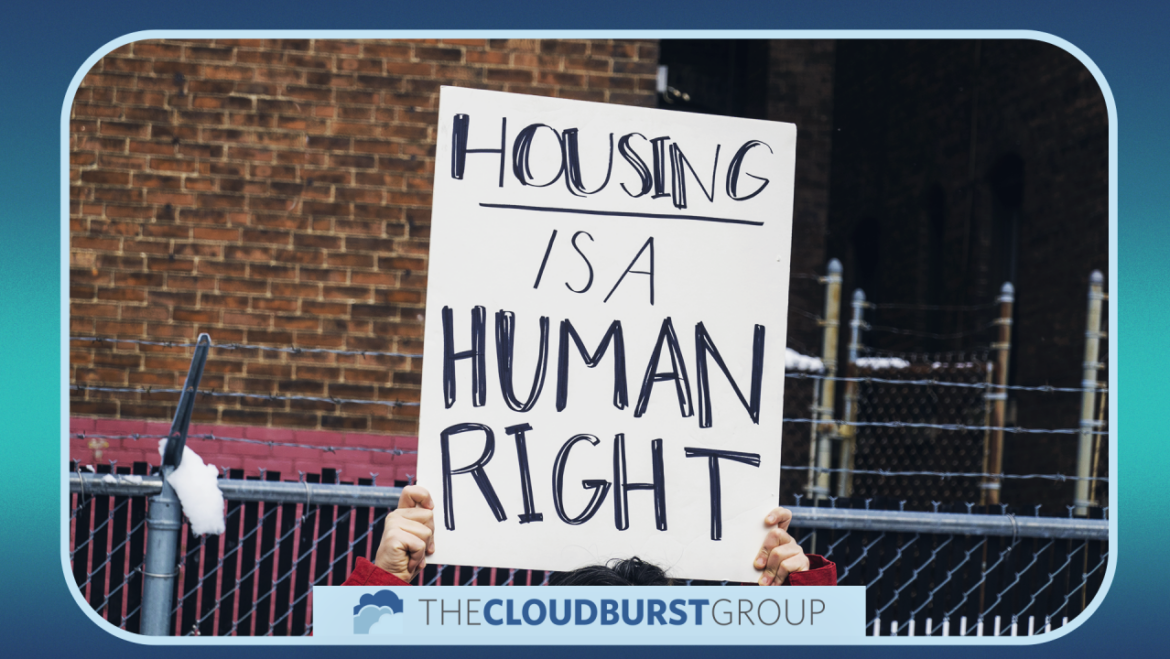Equal access to fair housing is a core value of Cloudburst’s work in communities around the country. Disparities in fair and accessible housing continue to impact the daily lives of low-income households. The Fair Housing Act of 1968 created an obligation for HUD and recipients of federal funds to “affirmatively further fair housing” (AFFH), which means doing more than just combating discrimination experienced every day, but also taking meaningful actions to overcome systemic disparities in order to create equity, opportunity, and inclusive communities.
In addition to the federal government, Cloudburst also works directly with states and local communities to combat discrimination and affirmatively further fair housing. Since 2015, Cloudburst has worked with more than 16 communities to develop meaningful, action-oriented analyses of impediments (AIs) and assessments of fair housing (AFHs) to identify, analyze, and address factors that prevent individuals and families from accessing housing and other opportunities. In communities such as Brevard County, FL, Richland, WA, Stanislaus County, CA, and Ventura County, CA, Cloudburst has utilized data analysis, policy analysis, and community engagement to identify the barriers to equity and opportunity. Cloudburst also works with communities to identify goals and actions to remove barriers to equity and opportunity.Part of this process is uncovering the significant disparities which can result in substantial and measurable differences in access to educational, transportation, economic, and other important opportunities in a community, based on protected class related to housing.
To demonstrate compliance with AFFH, HUD grantees must take meaningful steps to address fair housing concerns in their communities, work to overcome segregation, and promote inclusive communities without barriers that limit access to opportunity based on the seven federally protected classes (race, color, national origin, religion, sex (including gender identity and sexual orientation), familial status, and disability). Cloudburst has developed analytical and geospatial tools to identify and explore the underlying causes of racial disparities in its housing and community development practice area.
While HUD works to update the AFFH rules to accommodate more local decision-making and clarity for the newly defined Equity Plans, the need for change is still felt in many communities around the country as the effects of many decades of discriminatory policies and practices and historic disinvestment from communities of color are still felt.
Fair and equitable housing can be transformational, particularly for those who face frequent obstacles to affordable housing, and we will continue to focus on eliminating housing discrimination.
Resources:
To learn more about the Analysis of Impediments to Fair Housing Choice (AI) and efforts to promote equity, please visit the following sites:
Explore the History of Fair Housing and the signing of the Civil Rights Act of 1968, in addition to HUD’s FY 2022-2026 Strategic Plan “One HUD, For All,” which lays out a strategy for ensuring everyone has an affordable, healthy place to live.
In addition, HUD has developed a New Proposed Rule to implement the Fair Housing Act’s statutory mandate to AFFH). It developed a Fact Sheet that provides answers to frequently asked questions about the proposed rule.

